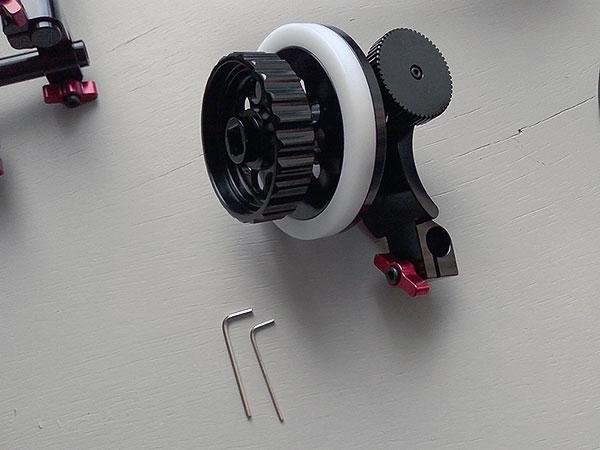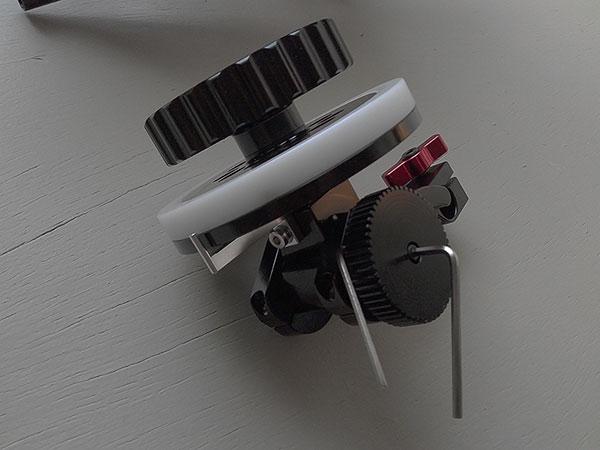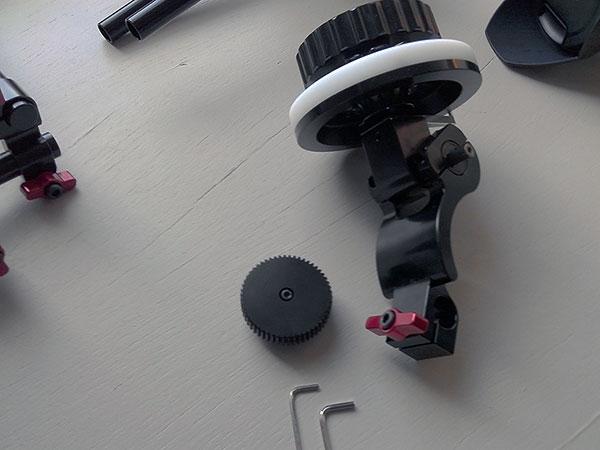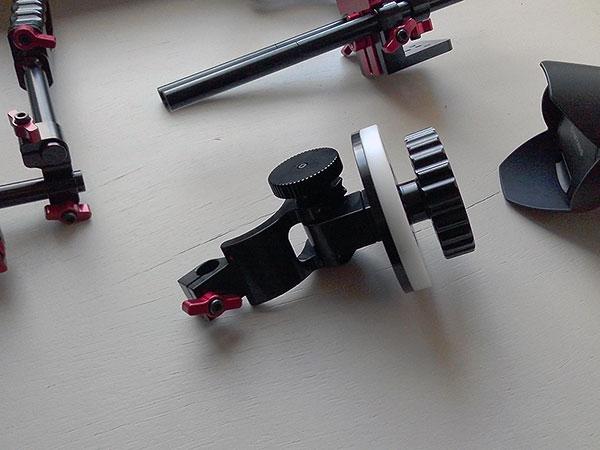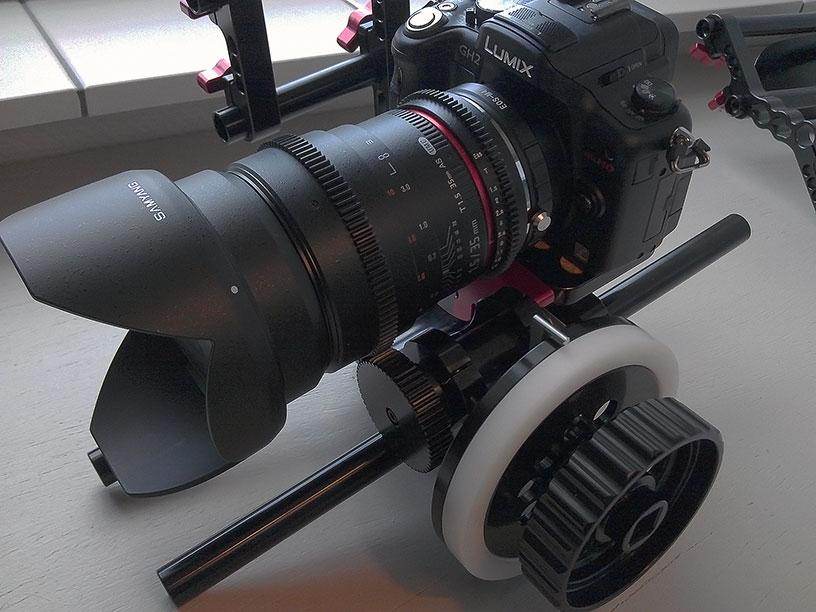Search the Community
Showing results for tags 'FF'.
-
Hi everyone, I was wondering if I could get some insight, feedback, reviews, attempts etc at finding or modding a follow focus for older anamorphic lenses where the front element moves in and out like the Iscorama and Lomo roundfront lenses. Ive been leaning towards a lanparte follow focus and trying to join 2 of the smaller gears so hopefully the larger gear on the lens will just travel from one to the other. suggested by Mr Gale :) Anyone else have any experience on this. Is it even an issue....People have to have a solution for the Lomos at least. The Iscorama is tapered which puts friction FF's out of the question. Thanks everyone Rob B
- 40 replies
-
- FF
- Follow Focus
-
(and 2 more)
Tagged with:
-
The Northrup video (thanks KarimNassar for posting) got me thinking about the following math to match a crop sensor to an FF sensor camera (this was also helpful: http://www.josephjamesphotography.com/equivalence/#introduction ): Multiply the focal length by the crop factor Multiply the f-stop by the crop factor Divide the ISO by the square of the crop factor The first two equations deal with the difference in scale. The physical aperture (light opening, "entrance pupil") will be exactly the same: Given: f-stop = focal-length/aperture-diameter aperture-diameter = focal-length/f-stop GH4 Lens: 25mm f2.8 5D3 Lens: 50mm f5.6 GH4 aperture-diameter = 25mm/2.8 = 8.93mm 5D3 aperture-diameter = 50/5.6 = 8.93mm Thus, the aperture diameter or entrance pupil will let in exactly the same amount of light. The 5D3 sensor has a focal length that is 2x farther from the entrance pupil, and since the sensor is 2x bigger, it captures the larger projection of exactly the same amount of photons. Since we've spread the projection of photons out with a 2x larger area, the sensels will get 2*2 (area) = 4 times less light than a 2x crop sensor. So, we have to boost sensor gain 4x to match the crop sensor. Now, if due to manufacturing or technology advantages the full frame sensor is more sensitive per sensel vs. the crop sensor, then a 4x gain boost to match cameras won't be accurate. FOV and DOF will be exactly the same regardless of sensor technologies. The only differences will be sensitivity, noise, and color characteristics. After starting with a 5D Mark II, then going to a 5D Mark III, then adding a FS700+SpeedBooster, I began to suspect that there was nothing inherently special about FF. After reading about and understanding this math and physics, it's clear that there is no mathematical or physics-based advantage (in terms of light and photons) to FF over smaller sensors. Only when a larger sensor can be made more sensitive, less noisy, and/or provide improved color processing can a FF sensor perform better than a crop sensor. The main reason the 5D2/5D3 became so popular was due to Canon's superior color processing. The 5D3's softness combined with low aliasing and excellent color processing for skin tones helped make it very popular as that is similar behavior to film. The ARRI Alexa has the best color processing and until the Dragon was released, the most dynamic range (not clear yet if the Dragon has matched or passed the Alexa, however it does an excellent job with skintones). If we consider the SpeedBooster, using the same lens on both cameras, so the entrance pupil is the same size and the focal length is the same, then we'll have exactly the same FOV and DOF when the focal reducer shrinks the image circle down to the crop sensor. This means the f-stop is not changed, just the t-stop (the SpeedBooster for Canon EF to NEX is really a 1.1 crop, however the bokeh was nearly the same in testing between the 5D3 and FS700 with the 24-105mm F4L lens). This is one case where the smaller sensor has an advantage: since we're shrinking the photon projection area, we are increasing the amount of light to the sensor (thus gaining the ~1 stop of light increase in the EF to NEX case). A current market advantage for FF over 2x crop is that there are more fast lenses for FF. We had to get a Voigtlander 25mm F.95 to come close to a 50mm F1.4 on FF. We'd need a 25mm F.7 to match the 50mm F1.4's entrance pupil size and thus bokeh. To match the 50mm 1.2, we'd need a 25mm F.6! Other than available/affordable lens choices, sensor technologies and color science, there's no mathematical or physical advantage to FF over crop sensor cameras. The noise characteristics of the GH4 are finer and nicer than the 5D3 and FS700 in low-light testing so far. The detail captured by the GH4 exceeds the FS700 (and slightly passes the C100/C300 (for 4K downsampled to 1080p)). 5D3 RAW still has the nicest skintones, however we're still learning to use the GH4. Understanding that there's nothing magical about FF got me more interested in giving a 2x crop sensor camera a try- so far the quality is impressive.
-
Hi everyone, I've been using the iFocus from Gini Rigs for a couple of weeks now and I just thought I had to share my opinion about using it. First of all, it's a nice follow focus, it's got hardly noticeable backlash and offers smooth focusing. The main disadvantage in my opinion is its size. It's really big and looks somewhat silly on my GH2 rig, but it does the job right when used properly. So how to get the most out of it? Well, out of the box, it has it's focusgear on the right side, closest to your camera, which is very common for follow focuses. But due to it's size, it will get in the FOV of (smaller) wide angle M43 lenses (<14mm). It also won't allow the use of sunhoods, because of the small space between the gearbox and gear, the gearbox will hit the hood before the focusgear can slip into lensgear. [attachment=300:000.jpg] So the first thing I did was switching the gear from the right to the left side. You'll just need two small hex keys (I think its 2 and 3mm) to do this. [attachment=301:001.jpg] [attachment=302:002.jpg] But after this, the follow focus will block the view of the FL and DOF markings on the lens, and will make it harder to adjust aperture when having a manual aperture ring. [attachment=303:003.jpg] To solve this little problem I attached the 15mm connecter to the other side of the rig, so a large part of the FF will be under the lens. You can rotate the gearbox, so the wheel will be vertical again. [attachment=304:004.jpg] So this is my opinion on using this follow focus, just thought to share it with you. Any tips or recommendations are welcome.




